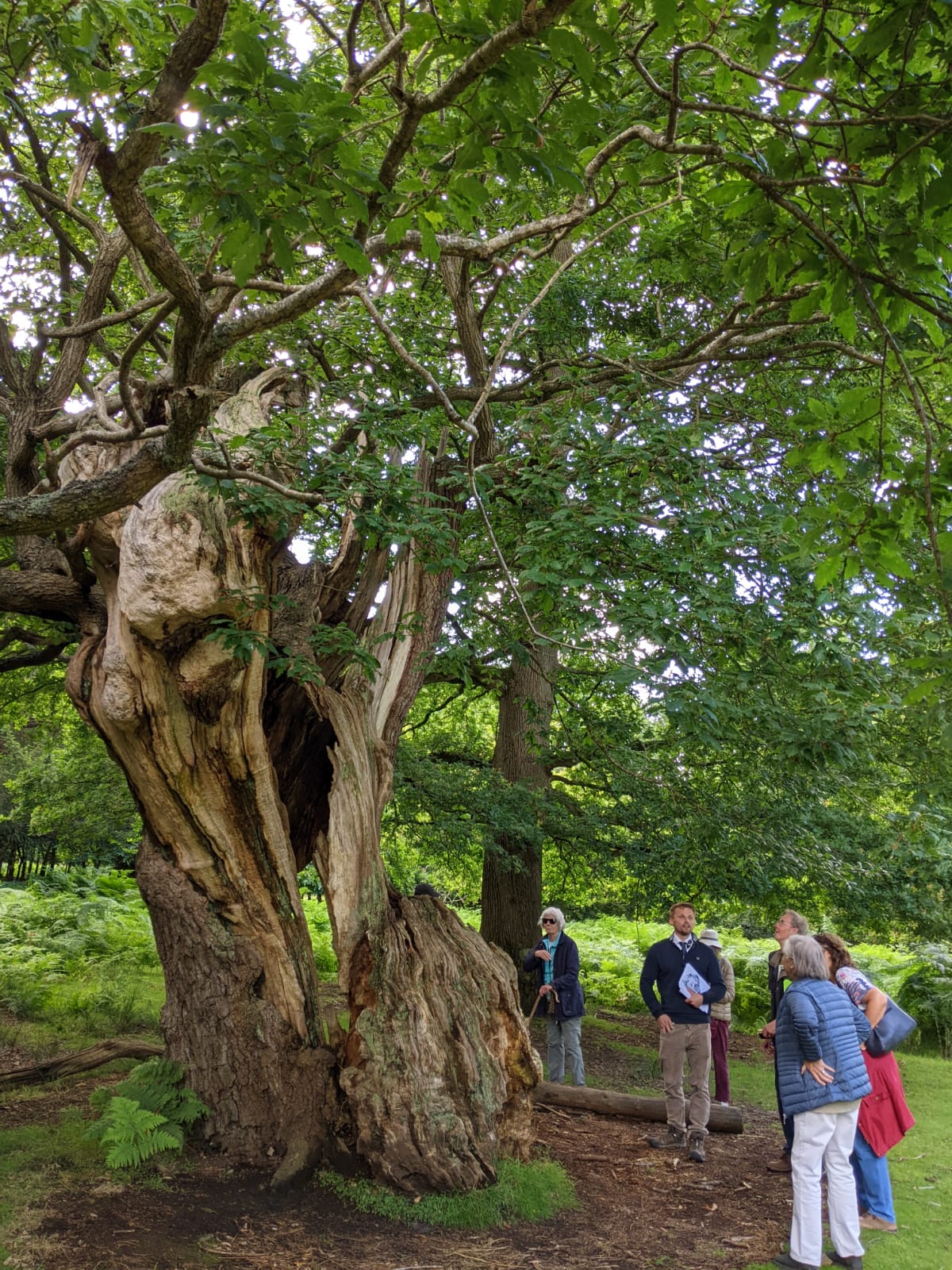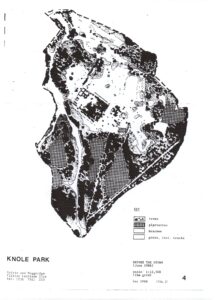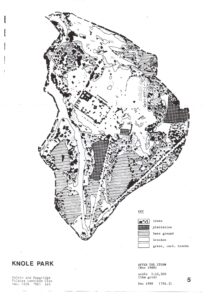
This was an opportunity to visit the oldest deer park in the UK, which, as was very evident even on arrival, still houses a group of Fallow deer living wild in the 900 acre park.
Our group of 18 visitors was hosted by a team of three responsible for management and health of the estate woodland and grounds as well as the deer population.
Our visit focussed on the park environment, which is significantly undisturbed over many centuries due to its importance as a deer park for hunting. Even now, there is no grass management required as the deer provide the answer by grazing, but other animals – grey squirrels – have to be managed, to ensure the young trees planted have the best chance of avoiding damage from squirrel teeth. Ant hills exist in huge numbers in the grassland, some of these estimated to be significantly old.

The great storm of 1987 ravaged the park – see attached maps; approximately 25% of trees were lost and the replanting of 90,000 trees took 3 years. More recent plantings and management have been selective; there is a desire to reduce the conifer stands (Scots Pine) and replace with broadleaf trees more natural in this specific environment.


Of course there were veteran, ancient and champion trees in the park, some which we could admire and some which were further away than we could manage to visit on the day.
One feature that particularly impressed was the mile-long Chestnut Walk, a broad avenue of sweet chestnut which disappeared into the distance…the trees were planted between 1727 and 1784, so definitely qualified as ancient and venerable (as well as having a very impressive girth and size).

We learned that yew trees in the park were used as a marker for the huntsmen in the past, and that hawthorn had been the boundary marker-trees before fencing became the practice.
Our guides explained how the deer were managed (and the public were managed to leave the deer as wild as possible) and how the woodland was adopting pollarding and thinning as management techniques. Bracken and ragwort were common – and invasive of the grassland – so these were also controlled through various management techniques, including squashing the bracken and pulling the ragwort.

Our guides were extremely generous with their time, and shared their knowledge and experience readily in answer to our questions. Curious fact of the visit: deer are confused by a fence that is not straight, so trees planted in a ring that is surrounded by a fence-ring will escape visit from the deer!


